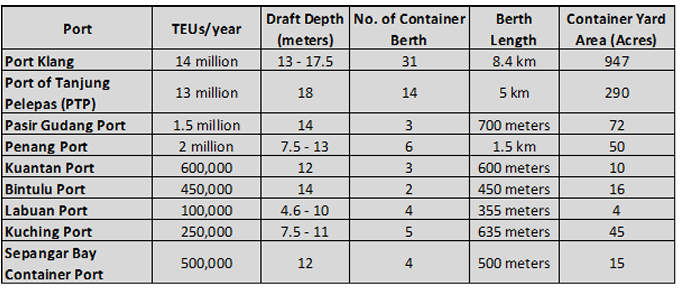This article is contributed by Irhamy Ahmad MRICS, Founder & Managing Director of Irhamy Valuers International
Strategically located along the Strait of Malacca, one of the world’s busiest shipping lanes, Malaysia is a prominent maritime nation. Its seaports play a critical role in both regional and global trade, functioning as transshipment hubs for Asia and gateways to the Southeast Asian market. Through its well-connected network of container ports, Malaysia efficiently links domestic industries to international markets.

Malaysia’s container trade has grown exponentially over the past two decades. Accounting for over 25% of all containers handled in the region today, the country has witnessed a remarkable 400% increase in container throughput since 2000, when it contributed only 10%. According to the United Nations Conference on Trade and Development (UNCTAD), Malaysia has ranked 5th globally in shipping line connectivity since 2019, ahead of more economically developed nations such as Japan, the Netherlands, and the United Kingdom.
It comes as no surprise that Malaysia is home to two of the largest port facilities in the world. Leading the way, Port Klang and the Port of Tanjung Pelepas (PTP) handle 64% of the total cargo throughput by Malaysian ports. Both ports consistently rank among the top 20 busiest ports globally. In the 2023 Lloyd’s List of one hundred container ports, Port Klang rose two places to 11th (up from 13th in 2022), while PTP secured 15th position, reinforcing Malaysia’s competitiveness in global trade
The table below (Figure 1) provides a snapshot of Malaysia’s key container ports, detailing their operational capacities and highlighting their unique attributes. Each port contributes to the country’s maritime infrastructure, supporting both international and regional trade

While Port Klang and PTP dominate Malaysia’s port landscape, regional container ports also play an essential role in fostering balanced trade development. Penang Port, strategically positioned in northern Peninsular Malaysia, serves as a critical hub for industries in the region. Kuantan Port facilitates trade along the east coast, providing access to the South China Sea and broader international markets. Similarly, East Malaysian ports such as Kuching, Bintulu, and Sapangar Bay are pivotal in linking Sarawak and Sabah’s resource-rich economies to global trade networks. Each of these ports is tailored to its region’s unique needs, ensuring seamless goods movement throughout Malaysia and beyond.
The nation’s strategic location and advanced port infrastructure have been instrumental in attracting global shipping lines, spurring economic growth, and enabling efficient trade flows. To sustain this momentum, the nation must tackle emerging challenges, including port congestion, climate adaptation, and growing competition in the region. By embracing smart port technologies, increasing container yard capacities, and expanding harbour drafts, Malaysia’s ports are well-positioned to meet future demands and remain competitive on the global stage.
Malaysia’s container ports are the backbone of its economy, driving industrial growth and facilitating seamless global trade connections. Port Klang and PTP lead as internationally acclaimed transshipment hubs, while regional ports like Penang, Kuching, and Sapangar Bay cater to diverse economic demands. As Malaysia continues to invest in its maritime infrastructure and embrace technological advancements, it is well-positioned to maintain its status as a leading logistics hub in Southeast Asia and beyond.
